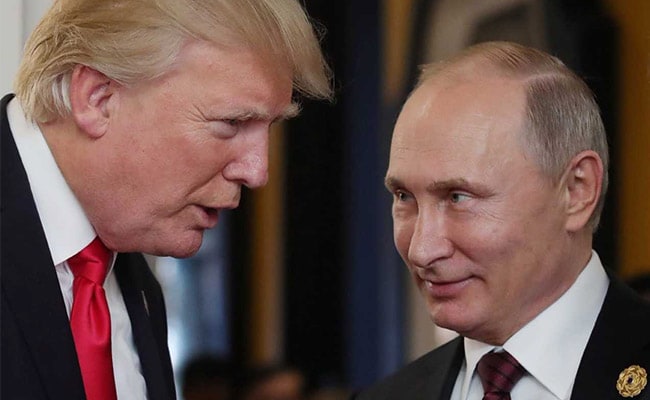Is Trump Favoring Russia Over Ukraine by Abandoning the Country?
The Disruption of International Order by Donald Trump
Donald Trump has spent only a month in his second term as the US President. However, he has disrupted the international order, weakened the Western alliance, and created a sense of insecurity and uncertainty among its members, surprising even some of his supporters.
A Paradigm Shift in US Foreign Policy
There has been a paradigm shift in US foreign policy under Trump. He is now closer to Moscow than Washington’s traditional allies. He has embraced the Kremlin’s narrative on Ukraine and has sidelined US allies.
Although senior members of the Trump administration have denied that the US has abandoned Kyiv and ignored its European allies, Trump himself has not made any serious attempts to pacify Ukrainians and Europeans.
Actions Speak Louder
His closeness to Russia has been on display since he talked for 90 minutes on the phone with Russian leader Vladimir Putin, in which they agreed to start negotiations to end the Ukraine war, which will mark its third anniversary on Monday.
Trump did speak to Zelenskyy soon after that call with Putin, but a nervous Ukrainian President warned that excluding his country from the talks would be “very dangerous”. Events after that only made Ukrainians feels sidelined.
Trump’s Vice President, JD Vance, met European leaders in Munich two days later. But his comment that Europe will not be included in the peace talks only helped fuelled the speculation that they were being left out of the future of Ukraine, which is closer to their homes and in which they have invested a lot of money and effort since the Russian invasion.
The Trump-Zelenskyy Row
A frustrated Zelenskyy dismissed the Riyadh talks as worthless. Trump did not like those comments and called the Ukraine President a dictator, even accusing him of starting the war.
Zelenskyy said the US President was living in a Russian-made “disinformation space”. This infuriated Trump, who does not take kindly to any criticism.
Ukraine’s Distant Dream
Until a year ago, Ukraine’s leader was talking about even liberating all its territory, including Crimea, which Russia annexed in 2014, with the help of Western military equipment. Ukraine even succeeded in occupying the Russian territory of Kursk, which it had thought would be used as a bargaining chip during negotiations with Moscow.
But all that now looks like a distant dream. With Trump back in the White House, Ukraine fears that Russia will be allowed to keep all the occupied territory as part of the deal to end the war. Kyiv is now likely to be denied NATO membership. That could be a promise to Russia to end the war.
Europeans Are Nervous Too
It is not just Ukraine, America’s European allies are also now nervous about the intent of Trump. Since the Second World War, they enjoyed the US security umbrella under NATO.
But now they are unsure if the US under Trump will honour Article 5 of the NATO, which is triggered when a member state comes under attack.
There is even fear in Europe that Donald Trump may sign a deal with the Russian leader Vladimir Putin that will lead to the withdrawal of US forces from Baltic states and effectively kill the NATO alliance.
Why has Trump Changed the Narrative?
Trump has always been an admirer of strongmen like Putin. Even during his first term, he developed a rapport with him. He also dislikes Zelenskyy, whom he sees as more of a roadblock in ending the Ukraine conflict.
As a former businessman, Trump sees things from the perspective of profitable deals. Western sanctions have hit Russia, but American companies have also suffered business losses, running into billions of dollars. He would like to reverse that.
And despite Ukraine’s resistance, Trump believes Zelenskyy will have to give access to critical minerals in return for any future US support.
European Plan
In the face of changing US policy under Trump, European leaders are working on a plan to guard against a Russian attack. This involves a proposal to deploy tens of thousands of peacekeeping troops in Ukraine.
But the idea doesn’t have wider support in Europe. Germany, another big power in the continent, has already called it premature. The proposal has been dismissed by Russia, which currently has about 600,000 troops in Ukraine.
But even Britain and France, with much smaller armies than Russia, can’t send troops to Ukraine without some backup from the United States. And that looks unlikely, for now.
(Naresh Kaushik is a former editor at the Associated Press and BBC News based in London.)
Disclaimer: These are the personal opinions of the author

